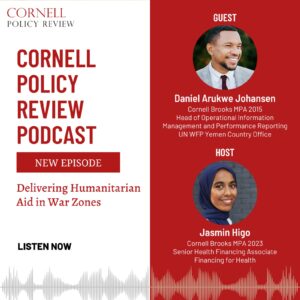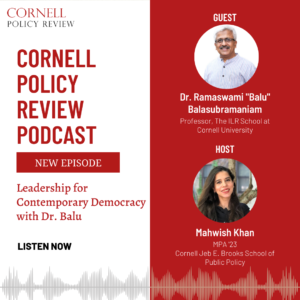Source: Department for International Development (DFID)
Written by: Fatima Khalid Khan
Edited by: Kathleen Egan
Despite being a signatory to the Convention on the Elimination of all Forms of Discrimination Against Women (CEDAW), [1] Pakistan remains one of the most dangerous countries in the world for women.[2] Of the 144 countries assessed by the World Economic Forum’s Gender Parity Index (GPI), a measure of gender parity across socioeconomic dimensions, Pakistan ranks as the second worst.[3] According to the Forum’s 2017 Global Gender Gap Report which evaluates the same 144 countries based on four thematic dimensions- economic participation and opportunity, educational attainment, health and survival, and political empowerment- the country ranks 112th in economic participation and opportunity, 110th in educational attainment, and 112th in political empowerment. These scores are appallingly low for a country home to 101,314,780 women, as of 2017.
Pakistan’s most populous province, Punjab, has a population of 110,012,442, forty-nine percent of which is comprised of women, as per the 2017 national census.[4] The province also reports the highest incidence of Violence Against Women (VAW) including crimes in the name of honor, acid crimes, revenge rape (vani), and exchange marriages (vatta satta).[5] Despite laws for the protection of women instituted at the federal and provincial level, VAW still persists. Recent data obtained from the Investigation Branch of the Punjab Police revealed that six women are murdered, eight are sexually assaulted, eleven are battered or assaulted, and thirty-two are abducted in the province on a daily basis. Nevertheless, reporting rates of VAW Crimes remain high while conviction rates remain low. In 2017, for example, 7678 cases were reported and only four percent of the 7,678 cases reported led to a conviction. [6][7]
A chief reason behind the frequency of gender-based violence in Punjab is the prevailing patriarchal notions that favor conventional roles for women and girls. The cultural importance of these notions compromise women and girls’ access to healthcare, education, and employment. With no national mechanism to collect data on VAW, many instances of violence go unnoticed while many perpetrators go unpunished. In Punjab and in Pakistan at-large, an effective response mechanism is needed to counter the systemic deprivation, harassment, and humiliation of women and girls. The UN Women’s Essential Services Package for Women and Girls Subject to Violence presents a theoretical framework for low- and middle-income countries aiming to respond to and subsequently tackle VAW.[8] An assessment of the country’s existing criminal justice system reveals the need to enhance these mechanisms for the protection of women and girls.
Assessing Pakistan’s Criminal Justice System
According to the Constitution of Punjab, there can be no discrimination on the basis of sex alone and the State may take any steps to protect women and children. [9] Some of the prominent federal and provincial laws operating in Punjab include Pakistan Penal Code 1860, Criminal Procedure Code 1898, Acid Control and Acid Crime Prevention Act 2011, Prevention of Anti-Women Practices Act 2011, and Punjab Protection of Women Against Violence Act 2016. [10]
Due to the lack of streamlined access to justice for women survivors of violence, successful conviction of VAW crimes remains very low. Female survivors of VAW who choose to report their cases, struggle to seek justice in the country’s convoluted and disjointed legal process. After filing a complaint with the police, they must complete a medical and legal examination in a certified government hospital. A certificate is obtained after the examination that the victim must present to the police to register the case officially. Since there is a clear lack of investigation officers trained to respond to sexually based offenses, prosecutors often raise objections to the evidence they receive from police officers which has negative implications for the strength of the case.
Evidence is often reverted back to prosecution where objections arise and lead to serious delays in the development of the case and the mishandling of evidence.[11] Most cases of VAW are lost as a result of these weak justice delivery institutions, incompetent service providers, delays in coordination, and/or the prevalence of desensitized male doctors, lawyers, police officers, prosecutors, and judges whose biases and prejudices exacerbate the trauma experienced by the victim.
Violence Against Women Centres (VAWCs) in Pakistan
Pakistan’s existing criminal justice system fails to respond adequately to the trauma faced by survivors and ignores psychosocial support services entirely. Existing services focus excessively on the provision of shelters for women that are displaced or rendered homeless as a result of domestic abuse. Responding to the lack of access to effective mediation services and punitive measures, individuals residing in rural areas tend to opt for arbitrary modes of conflict resolution.
Recognizing the need to increase and streamline support systems for victims of gender-based violence, Violence Against Women Centres (VAWCs) were introduced by the Punjab Government’s Strategic Reforms Unit (SRU) in 2016. The Punjab Protection of Women Against Violence Act 2016 serves as the legal framework for the establishment of these centers.[12] According to the Act, each VAWC is to offer comprehensive services under one-roof and employ an all-female staff. In accordance with the Act, each center “shall be a converging point for all essential services to ensure justice delivery including police reporting, registration of criminal cases, medical examination, and collection of forensic and other evidence.” [13] The first Centre was established in Multan, Punjab and provides a crucial case study that ascertains the merit of establishing further centers across the province. [14] At the facility, over 3,000 cases of violence have been registered including cases of domestic abuse, sexual assault, family disputes, economic abuse, child custody, property disputes, and psychological abuse.[15] The VAWC model is also in line with the UN Women’s Essential Services Package.
Each case of violence is responded to with its own streamlined Standard Operating Procedure (SOP).[16] For example, if a survivor of sexual assault enters a VAWC, she reports the case to the front desk where it is recorded with her consent. She is then referred to the medical department, where she is provided first aid and a basic medical check-up and then given a docket certificate. This docket certificate is then presented to the medical department who in turn gives her the medical confirmation needed to register the case.
Once her case is registered, it is referred to prosecution to initiate a criminal proceeding. Meanwhile, the survivor is provided trauma assistance and counseling services. Since all of these departments are located under one-roof, she only needs to visit one building.[17] For instances that entail family disputes, VAWCs have their own mediation mechanism where the complainant and perpetrator are provided counseling. Upon their individual consent, they are encouraged to decide the terms of agreement in a non-threatening setting.
Since opening, the VAWC has seen six times more women access the facility as compared to existing state-run shelter homes and police stations in the district of Multan. The success of this model warrants its replication across the province of Punjab and in other provinces throughout the country.
Recommendations: Strengthening the Legal Framework
Laws for the protection of women need to be reformed for safeguarding women’s access to justice. Currently, a commonly used medical practice in the province for sexual assault cases is the two-finger virginity test. This test subjects women and girls to medical examination with the primary goal of determining if the survivor was a virgin prior to the sexual assault incident. In Amanullah v. State (2009), the Lahore High Court accepted the victim’s testimony solely because the victim “admitted two fingers painfully” which showed that she engaged in sexual intercourse for the first time.[18] In addition to this archaic test, forensic evidence is only admissible as secondary evidence which allows less room for objectivity. To ensure women’s access to safe and ethical medical practices, the two-finger virginity test must be abolished across Punjab and forensic evidence should be the primary source of evidence in sexual assault cases.
Given the prevalence of domestic violence, specialized courts for Gender Based Violence (GBV) headed by female judges should be established. To empower survivors, amendments to the Punjab Women Protection Act 2016 should pull from Australia’s Domestic Violence Evidence in Chief Act, which mandates that “a complainant may give evidence in chief of a representation made by the complainant wholly or partly in the form of a recorded statement.”[19] This amendment will prevent survivors of domestic violence from repeating their traumatic experience in front of perpetrators in court.
To further empower the survivor, all examinations should take place on the same day and should be restricted to the present case only, thereby barring any questions about the victim’s character or past behavior. This protocol should be codified in the legal framework with affirmative timelines and accountability mechanisms for the lawyers, judges, and prosecutors involved.
Similarly, in order to prevent the perpetrator from influencing the victim in court proceedings, her statement should be recorded in a partitioned area in the court. Gender sensitization trainings of judges, lawyers, and prosecutors should be mandated. Of the 1,863 judges in Punjab’s judiciary, fourteen and a half percent are women and out of sixty judges of the Lahore High Court, only three are female.[20] Women’s representation in the judiciary, prosecution, and the legal profession needs to increase to ensure impartiality in proceedings.
Recommendations: Socioeconomic Rehabilitation of Women Survivors of Violence & Prevention of VAW Crimes
The economic empowerment of women provides them the choice to leave abusive relationships. Of the cases registered at the VAWC in Multan, seventy percent are domestic violence cases and sixty percent of those who report them are economically dependent on their perpetrator.[21] Women and girls suffering from domestic abuse are less likely to report it as social perceptions deem it a subject of the private space. According to a survey conducted by Gallup Pakistan, sixty-five percent of the women in Pakistan believe that domestic violence is the family’s own problem.[22]
In the context of Pakistan, where two-thirds of forty-nine and a half million adults are illiterate women, VAW is often fueled by women’s financial dependence on male members of the family. To empower women survivors of violence accessing the VAWC, initiatives that contribute to socioeconomic empowerment can improve their outcomes. Survivors of VAW Crimes should be provided access to technical and vocational training.[23] Centres can offer opportunities for women to join savings groups which positively contribute to their economic well-being. Mobile banking can be used to digitize group saving initiatives. Both the public and private sector, along with civil society organizations can train and recruit employees from VAWCs.
The effective elimination of gender-based violence requires social and institutional change and a multi-stakeholder approach. In a country where citizens, especially women, have little faith in the criminal justice system, it is no surprise that women and girls refuse to report incidences of violence waged against them or fail to receive the support needed to navigate the trauma that comes with it. Introducing improvements to the one-stop VAWC model can pave the way forward for a more holistic response to VAW and provide better safety, security, and opportunity for women in Punjab.
References
- United Nations Development Programme (UNDP), Human Development Report (New York: Oxford University Press, 2000) ↑
- “The World’s Five Most Dangerous Countries for Women 2018.” poll2018.Trust.org, Thomson Reuters Foundation, poll2018.trust.org/. ↑
- World Economic Forum, “The Global Gender Gap Report 2017.” pg. 264<www.weforum.org/reports/the-global-gender-gap-report-2017.> ↑
- Pakistan Bureau of Statistics, “National Census (2017).” ↑
- Aurat Foundation, “Annual Report January – December 2014: Violence Against Women in Pakistan,” pg. 11, <https://www.af.org.pk/PDF/VAW Reports AND PR/VAW 2014.pdf> ↑
- Punjab Commission on the Status of Women, “Gender Parity Report 2018,” (2018), pg. 174 ↑
- Punjab Prosecution Department. ↑
- UN Women, “Essential Services Package for Women and Girls Subject to Violence,” (2015)< http://www.unwomen.org/-/media/headquarters/attachments/sections/library/publications/2015/essential-services-package-en.pdf?la=en&vs=3648> ↑
- Article 25, Constitution of Pakistan ↑
- Punjab Commission on the Status of Women <https://pcsw.punjab.gov.pk/womens_rights> ↑
- War Against Rape “The Criminal Justice System & Rape.” <http://www.researchcollective.org/Documents/The_Criminal_Justice_System_and_Rape_NEWFINAL.pdf> ↑
- The Punjab Protection of Women Against Violence Act 2016 http://punjablaws.gov.pk/laws/2634.html ↑
- ibid. ↑
- Shah, Nadeem. “Pakistan’s First Violence against Women Center inaugurated in Multan” The News https://www.thenews.com.pk/latest/195270-Pakistans-first-Violence-Against-Women-Center-inaugurated-in-Multan ↑
- Violence Against Women Centre, Multan, Punjab Social Welfare & Bait-ul-Maal Dept. ↑
- Violence Against Women: Maiden Centre to Go Functional in January <https://www.dawn.com/news/1302025> ↑
- Quran, Layla. “In Pakistan, Abused Women Find Comfort and Justice at this All-female run Centre” Press Broadcasting Service <https://www.pbs.org/newshour/world/in-pakistan-abused-women-find-comfort-and-justice-at-this-all-female-run-center> ↑
- Lahore High Court, “Amanullah v. State (2009)” ↑
- Domestic Violence in Chief Act 2015 ↑
- Punjab Commission on the Status of Women, “Gender Parity Report” ↑
- Violence Against Women Centre, Multan, Punjab Social Welfare & Bait-ul-Maal Dept. ↑
- Gallup & Gillani Pakistan, “Public Opinion in Pakistan in the Year 2005.” < http://gallup.com.pk/wp-content/uploads/2017/03/30-March-2017-1.pdf> ↑
- Gender Parity Report 2016 pg. 133, Punjab Commission on the Status of Women ↑





